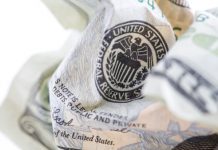Wage Growth to Trump Number of Jobs Added
The US dollar is mixed on the Thursday session against the major currencies awaiting the release of the U.S. non farm payrolls (NFP) due Friday, August 4 at 8:30 am EDT. The US economy is anticipated to have gained 181,000 jobs in July but more importantly the average hourly earning to have risen 0.3 percent. The U.S. Federal Reserve could pause its monetary policy tightening if there is no clear evidence that inflation is moving closer to the 2 percent target.
US employment has been the most reliable pillar of the economy, but as headline job additions have kept a strong record, wage growth and labour participation have stagnated. The Fed is hoping the jobs recovery forces employers to offer more competitive salaries and gets people back on the hunt for jobs to keep on the path of more future rate hikes and the start of its balance sheet reduction program.
Canadian employment data will also be published on Friday. The jobs data has crushed expectations this year, with an outlier in the report published in May. While the forecast remains close to the past two month’s estimate of 11,000 jobs the Canadian economy added 54,500 and 43,300. The US NFP report will get most of the spotlight as the USD will trade based on the indicator release, Canadian dollar investors will be on the lookout for confirmation of a strong recovery north of the border.

The EUR/USD lost 0.156 percent on Thursday. The single currency is trading at 1.1866 after breaking briefly above the 1.19 price level on Wednesday. The EUR has gained against the dollar after the turmoil in Washington has impaired the American currency. Employment data yesterday was not as strong as expected and put serious question marks on the NFP jobs report due Friday.
The ADP private payrolls report came in lower than expected at 178,000 jobs but there was some positive news with the upward revision to the already strong numbers from June. Wage growth was stuck at 2.5 percent which puts the emphasis on the NFP report to really move the needle for the USD.
The market is now unsure if the Fed will hike rates for the remainder of the year. The CME FedWatch tool is showing a 98.6 percent probability of the Fed funds rate staying at 100-125 in September but the December Federal Open Market Committee (FOMC) meeting is now 50/50 to end with rates going to 125-150 basis points. The Fed moved away from the patient mode it had displayed in the previous two years and has already hiked twice in 2017 and has signalled it will start to reduce the balance sheet it accumulated starting this fall.
The Trump administration has lost credibility after squandering important political capital by failing to push through health care reform and various changes in its first six months in power. The market was pricing in tax reform and infrastructure spending in what was called the Trump trade, but as those policies kept being pushed back the USD depreciated. Tax reform is back on the agenda, but there are serious questions on how optimistic the Administration is when it talks about an obstacle free path for the policy.
August will have very little economic events to guide the currency markets, leaving a lot in the hands of political uncertainty as the US relations with China and North Korea, and the upcoming start of NAFTA renegotiations talks could prove to be tough issues for the Trump administration, but with the benefit of less oversight from elected representatives in start contrast of the healthcare reform attempt.

The GBP/USD lost 0.853 percent in the last 24 hours. The pair is trading at 1.3128 after the Bank of England (BoE) kept interest rates unchanged at 0.25 percent. The MPC voted 6-2 to keep rates at current levels. No surprise after last month the vote of 5-3, with a prominent hawk set to leave the committee. The pound dropped even after the BoE mentioned that rates could be higher after a year on the back of a strong jobs market and a global recovery but the ghost of Brexit kept the pound from gaining too much on those comments.
The BoE disclosed that Brexit uncertainty has discouraged employers from offering higher wages and with rising inflation that will continue to hit British pocket books. Updated forecasts on the UK economy were downgraded with higher inflation estimated did not leave the pound other option but to drop.
Market events to watch this week:
Wednesday, August 2
4:30 am GBP Construction PMI
8:15 am USD ADP Non-Farm Employment Change
10:30 am USD Crude Oil Inventories
9:30pm AUD Trade Balance
Thursday, August 3
4:30 am GBP Services PMI
7:00 am GBP BOE Inflation Report
7:00 am GBP MPC Official Bank Rate Votes
7:00 am GBP Monetary Policy Summary
7:00 am GBP Official Bank Rate
7:30 am GBP BOE Gov Carney Speaks
8:30 am USD Unemployment Claims
10:00 am USD ISM Non-Manufacturing PMI
9:30 pm AUD RBA Monetary Policy Statement
9:30 pm AUD Retail Sales m/m
Friday, August 4
8:30 am CAD Employment Change
8:30 am CAD Trade Balance
8:30 am USD Average Hourly Earnings m/m
8:30 am USD Non-Farm Employment Change











